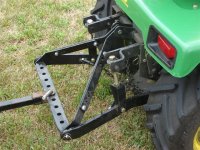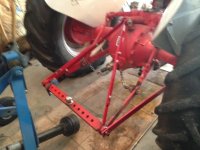jeff9366
Super Star Member
- Joined
- Jan 14, 2011
- Messages
- 12,386
- Tractor
- Kubota Tractor Loader L3560 HST+ ~~~~~~~~~~~~~ 3,700 pounds bare tractor, 5,400 pounds operating weight, 37 horsepower
Unlike a tractor rear/center drawbar, Photo #8, which is attached directly to the tractor frame/chassis, a tractor cross-drawbar, Photo #1, mounts through the "bullseyes" integral to the left and right Lower Links of the Three Point Hitch. An inexpensive fitting, known as a drawbar lock, Photo #2, couples the cross-drawbar and one Lower Link to prevent the cross-drawbar from twisting/turning on its axis. Alternately to a drawbar lock, a substantial vertical component, Photos #3 - #6, is bolted to the cross drawbar, adding a Top Link connection and a receiver hitch at the base. A third option is an integrated, triangulated cross-drawbar, Photo #7, which includes a Top Link connection. Option three is the high value hardware.
A cross-drawbar allows elevation of towed logs, trees or railroad ties using Three Point Hitch hydraulic power. With 4" to 6" of elevation loads towed on the ground are unlikely to encounter obstructions stall the tractor or, much worse, drive the tractor vertical if the operator in not alert.
(I once had a Deere 750 vertical, towing timbers from the rear/center drawbar.)
With logs and trees elevated, less of the load is in ground contact, decreasing friction of the load against the ground and preventing the dragged load from plowing dirt. In some circumstances elevation permits heavier loads to be pulled.
The disadvantage of a cross-drawbar is its integration with the Three Point Hitch, a weaker connection point than the tractor frame/chassis. In imprudent operator could damage the Three Point Hitch with imprudent loads or imprudent operation. With loads in shear to a 20" to 30" cross-drawbar substantial strain is placed on perforated, mild steel bar. Most cross-drawbars in use for some time show distortion but remain functional; mine included.
Cross-drawbar loads pulled with load center-of-mass above rear axle height may induce tractor instability. My L3560 compact tractor is heavy for its size and my loads prudent. Tractor instability due to a moderately elevated load has never been an issue in my experience.
Using a Cross-drawbar to pull or push a two wheeled cart or two wheeled implement can be dangerous. The Three Point Hitch does not include a latch to prevent instantaneous Lower Links and cross-drawbar rise, potentially upsetting the load and injuring assistant(s). Hazardous rise may occur as a cart is loaded or unloaded, as cart load is moved in forward or reverse, or if someone steps on rear of the load, shifting weight distribution to the rear.
You will find reference to using chains or such to limit vertical movement of Lower Links for such loads.
[Credit: KTHOMPSON]
Cross-drawbars are readily available, sized for Category 1 and Category 2 Three Point Hitches in various widths. Cross-drawbars accept accessory clevis and bolt-on installations. Several are visible in photos.
The advantage of the rear/center drawbar, Photo #8, is its fixed attachment to the tractor frame/chassis, the strongest connection possible. On my Kubota L3560 the rear/center drawbar is always in place. The rear/center drawbar does not interferes with Three Point Hitch implements nor the mounted cross-drawbar.
Photo #3 ~ Omni Mfg., LLC, Deerwood, MN Combo Draw Bar Trailer vertical component. (2/2012)
LINK: Combo Hitches - OMNI Mfg LLC
Photo #4 ~ Triangle Hitch
LINK: 3 point hitch drawbar in Heavy Equipment, Parts & Attachments | eBay
Google Images: tractor cross drawbar - Google Search
ROPS folded because I was working in Florida jungle, rife with vines.
A cross-drawbar allows elevation of towed logs, trees or railroad ties using Three Point Hitch hydraulic power. With 4" to 6" of elevation loads towed on the ground are unlikely to encounter obstructions stall the tractor or, much worse, drive the tractor vertical if the operator in not alert.
(I once had a Deere 750 vertical, towing timbers from the rear/center drawbar.)
With logs and trees elevated, less of the load is in ground contact, decreasing friction of the load against the ground and preventing the dragged load from plowing dirt. In some circumstances elevation permits heavier loads to be pulled.
The disadvantage of a cross-drawbar is its integration with the Three Point Hitch, a weaker connection point than the tractor frame/chassis. In imprudent operator could damage the Three Point Hitch with imprudent loads or imprudent operation. With loads in shear to a 20" to 30" cross-drawbar substantial strain is placed on perforated, mild steel bar. Most cross-drawbars in use for some time show distortion but remain functional; mine included.
Cross-drawbar loads pulled with load center-of-mass above rear axle height may induce tractor instability. My L3560 compact tractor is heavy for its size and my loads prudent. Tractor instability due to a moderately elevated load has never been an issue in my experience.
Using a Cross-drawbar to pull or push a two wheeled cart or two wheeled implement can be dangerous. The Three Point Hitch does not include a latch to prevent instantaneous Lower Links and cross-drawbar rise, potentially upsetting the load and injuring assistant(s). Hazardous rise may occur as a cart is loaded or unloaded, as cart load is moved in forward or reverse, or if someone steps on rear of the load, shifting weight distribution to the rear.
You will find reference to using chains or such to limit vertical movement of Lower Links for such loads.
[Credit: KTHOMPSON]
Cross-drawbars are readily available, sized for Category 1 and Category 2 Three Point Hitches in various widths. Cross-drawbars accept accessory clevis and bolt-on installations. Several are visible in photos.
The advantage of the rear/center drawbar, Photo #8, is its fixed attachment to the tractor frame/chassis, the strongest connection possible. On my Kubota L3560 the rear/center drawbar is always in place. The rear/center drawbar does not interferes with Three Point Hitch implements nor the mounted cross-drawbar.
Photo #3 ~ Omni Mfg., LLC, Deerwood, MN Combo Draw Bar Trailer vertical component. (2/2012)
LINK: Combo Hitches - OMNI Mfg LLC
Photo #4 ~ Triangle Hitch
LINK: 3 point hitch drawbar in Heavy Equipment, Parts & Attachments | eBay
Google Images: tractor cross drawbar - Google Search
ROPS folded because I was working in Florida jungle, rife with vines.
Attachments
-
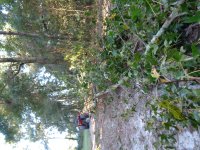 DSC00130.JPG7.6 MB · Views: 526
DSC00130.JPG7.6 MB · Views: 526 -
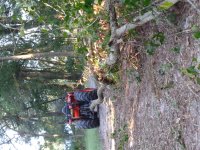 DSC00131.JPG7.8 MB · Views: 492
DSC00131.JPG7.8 MB · Views: 492 -
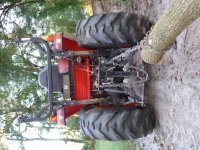 DSC00133.JPG7.7 MB · Views: 786
DSC00133.JPG7.7 MB · Views: 786 -
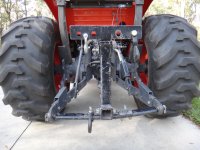 DSC00670.JPG3 MB · Views: 2,592
DSC00670.JPG3 MB · Views: 2,592 -
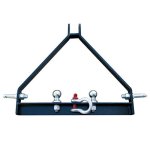 86545.jpg18.2 KB · Views: 672
86545.jpg18.2 KB · Views: 672 -
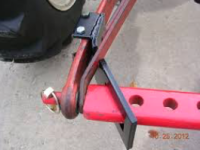 Screen Shot 2018-10-18 at 5.01.02 AM.png99.1 KB · Views: 685
Screen Shot 2018-10-18 at 5.01.02 AM.png99.1 KB · Views: 685 -
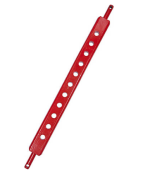 Screen Shot 2018-10-18 at 5.06.48 AM.png64.3 KB · Views: 443
Screen Shot 2018-10-18 at 5.06.48 AM.png64.3 KB · Views: 443 -
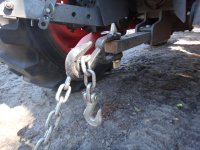 DSC00514.JPG3.1 MB · Views: 1,175
DSC00514.JPG3.1 MB · Views: 1,175
Last edited:
